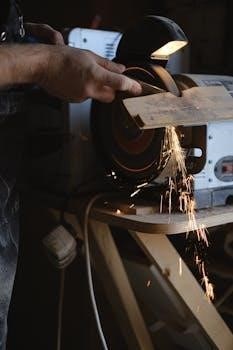A TENS machine delivers electrical pulses through the skin to alleviate pain. These pulses stimulate the body’s natural pain relief mechanisms, such as releasing endorphins. It is a non-invasive method for managing different types of pain.
Understanding TENS Technology
Transcutaneous Electrical Nerve Stimulation (TENS) technology employs low-voltage electrical currents to target nerve pathways. This stimulation interferes with pain signals traveling to the brain, effectively reducing pain perception. The electrical pulses, generated by a portable device, are delivered through electrode pads attached to the skin. It’s crucial to understand that TENS units do not deliver an electrical shock but rather a gentle, therapeutic current. By stimulating the release of endorphins, the body’s natural painkillers, TENS provides a drug-free approach to pain management. The user controls the intensity and duration of the stimulation, allowing for customized treatment. TENS can be effective for various pain types, but results can vary among individuals. Different frequencies and pulse widths can be used to achieve the desired pain relief. This technology offers a safe and convenient method for managing discomfort and promoting well-being. It’s vital to adhere to the instructions to maximize benefits and ensure user safety.

Preparing for TENS Treatment
Before starting TENS therapy, ensure the unit is off. Inspect all components, including the device and electrode pads. Check battery levels or charge the unit as needed, following the provided instructions.
Unpacking and Checking the Unit
Begin by carefully unpacking your TENS unit. Ensure that the package contains the main device, electrode pads, lead wires, and any power adapters or batteries. Verify that all components are present and undamaged. Check the TENS unit itself for any visible signs of wear or defects. Review the user manual to confirm that all items are included and to understand their proper function. Make sure the unit is off before proceeding. If using a rechargeable unit, ensure that it is fully charged before the first use. If you have a battery-operated unit, make sure you have fresh batteries on hand. This initial inspection is crucial for a safe and effective treatment session, and it is important to familiarize yourself with each component before starting. This step also allows you to confirm you have everything before you begin the treatment.
Powering On the TENS Machine
Once you have unpacked and checked your TENS unit, the next step is to power it on. If your device requires batteries, insert them according to the user manual’s instructions, ensuring the correct polarity. For rechargeable units, make sure that the battery is fully charged or connect the power adapter to a suitable source. Locate the power button on your TENS machine, which is usually clearly marked. Press and hold the power button until the device starts and the display lights up. Observe the unit to ensure that it is responding correctly, and that any indicators or lights are working. If the unit does not power on, double-check the battery connection or charging status. If problems persist, please consult the manufacturer or user manual. Never use a device with faulty power functions. Once powered on, you are ready to proceed to the next step of electrode placement.

Electrode Pad Placement
Correct placement of electrode pads is crucial for effective TENS therapy. Pads should be placed on or around the area of pain, ensuring adequate spacing between them. Proper skin preparation is essential.
Cleaning and Preparing the Skin
Before applying electrode pads, thoroughly cleanse the skin at the intended placement area. Use water or rubbing alcohol to remove any oils, lotions, or dirt. Allow the skin to air dry completely; this step is crucial for optimal pad adhesion and electrical conductivity. Avoid using soaps or cleansers that leave a residue. Ensure the skin is free from any open wounds or irritations. If using skin prep products, apply them according to the manufacturer’s guidelines and allow to dry. Proper skin preparation ensures a comfortable and effective TENS treatment and minimizes the risk of skin irritation during the session. This also ensures a better connection for the electrical current.
Correct Placement of Gel Pads
Position the gel pads directly on the skin around the area where you experience pain. If using two pads, place them at least one inch apart, ensuring they are not positioned over bony prominences. Aim for placement over muscle or fatty areas for maximum comfort and effectiveness. Connect the electrode wires to the gel pads before applying them to your skin. Ensure the pads are firmly attached and making full contact with the skin surface. Refer to your healthcare provider or the manufacturer’s instructions for specific pad placement guidelines related to your pain area. Proper placement is essential for effective pain relief and optimal TENS therapy results. Make sure the pads are not placed over wounds or tumors.
Avoiding Specific Areas for Pad Placement
When placing TENS unit electrode pads, it’s crucial to avoid certain areas of the body to ensure safety and effectiveness. Never place pads on the head, throat, or front of the neck, as this could interfere with vital functions. Avoid placing pads directly over the eyes or on the chest, particularly if you have any heart conditions or a pacemaker. Do not position pads over wounds, tumors, or areas with active skin irritation. It is also important to avoid bony prominences, as these areas tend to be less effective. Always consult your healthcare provider for guidance on the safest and most appropriate pad placement for your specific needs. Careful placement helps to prevent any adverse effects from TENS therapy.

Adjusting TENS Settings
TENS units start at the lowest intensity. Increase gradually to a comfortable level, adjusting if it feels weak or too strong. Select the appropriate treatment time as instructed for effective pain relief.
Selecting the Intensity Level
Begin with the lowest intensity setting on your TENS machine. Gradually increase the intensity using the adjustment buttons, until you feel a comfortable tingling sensation. The goal is to find a level that provides pain relief without causing discomfort or muscle contractions; If the sensation is too weak, increase it incrementally. If you experience discomfort or excessive muscle twitching, reduce the intensity immediately. It’s important to note that the ideal intensity is subjective and may vary based on your personal comfort and the specific area of treatment. Adjust the level during your therapy as necessary to maintain an optimal experience. Remember that the TENS unit should not cause pain. Finding the right level is a key part of effectively using your TENS device.
Understanding Treatment Time Settings
TENS machines offer adjustable treatment times, allowing you to tailor the therapy to your needs. Treatment time settings typically range from short durations, such as 15 minutes, to longer sessions of up to an hour or more. Refer to your TENS machine’s user manual for specific options. Start with shorter sessions when you first use the device and observe your body’s response. You can gradually increase the treatment duration as you become more comfortable and as needed for pain relief. It’s essential to follow the manufacturer’s guidelines and any recommendations from your healthcare provider regarding the appropriate duration. Avoid excessively long sessions, and remember that consistency is often more effective than a single long treatment. Understanding these settings helps optimize the therapeutic benefits of your TENS machine.

Safety and Considerations
TENS machines are generally safe, but certain precautions must be taken. Avoid use if you have a pacemaker or are pregnant. Always consult a healthcare provider for personalized advice.
When Not to Use a TENS Machine
There are specific situations where using a TENS machine is not recommended and could potentially be harmful. It is crucial to avoid using a TENS unit if you have a pacemaker or any other implanted electronic device, as the electrical impulses may interfere with its function. Pregnant women should also refrain from using a TENS machine, especially during the first trimester, unless specifically advised by a healthcare professional; Furthermore, TENS should not be applied directly over the eyes, the front of the neck or throat, the chest, or over any areas with wounds or tumors. Additionally, it is not advisable to use a TENS machine while driving or operating heavy machinery. If you have any doubts or specific health conditions, always consult your healthcare provider before using a TENS machine.
Proper Removal of Pads
Removing the electrode pads correctly is essential to ensure their longevity and prevent skin irritation. First, always turn off the TENS machine before attempting to remove the pads. Avoid pulling the pads off by the wires, as this can damage the connection and the wire itself. Gently peel the pads from the skin, starting from one edge and slowly lifting them. If the pads are sticking too firmly, you can moisten the edges slightly with water to loosen the adhesive. After removal, reapply the protective plastic film to the sticky side of the pads to prevent them from drying out and to maintain their adhesive properties. Store the pads in a cool, dry place. Proper care and handling of the pads will ensure they last longer and work effectively during future treatments.
Consulting a Healthcare Provider
Before starting TENS therapy, it’s vital to consult with a healthcare provider, especially if you have any underlying health conditions. A doctor can advise if TENS is suitable for your specific type of pain and medical history. They can also guide you on the appropriate intensity levels, pad placement, and treatment duration tailored to your needs. If you are pregnant, have a pacemaker, or suffer from epilepsy, professional consultation is crucial. A healthcare provider can also help you understand how TENS can complement other treatment methods and what to expect during your therapy. They can monitor your progress and make adjustments to your treatment plan as needed, ensuring the safest and most effective outcome. Always prioritize medical advice before using a TENS machine.
